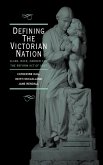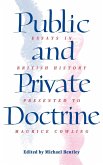This is the first large-scale study of conduct in warfare and the nature of chivalry in the Anglo-Norman period. The extent to which the knighthood consciously sought to limit the extent of fatalities among its members is explored through a study of notions of a 'brotherhood in arms', the actualities of combat and the effectiveness of armour, the treatment of prisoners, and the workings of ransom. Were there 'laws of war' in operation in the eleventh and twelfth centuries and, if so, were they binding? How far did notions of honour affect knights' actions in war itself? Conduct in war against an opposing suzerain such as the Capetian king is contrasted to behaviour in situations of rebellion and of civil war. An overall context is provided by an examination of the behaviour in war of the Scots and the mercenary routiers, both accused of perpetrating 'atrocities'.
Table of contents:
Preface; List of illustrations and maps; 1. Introduction: the conquest and chivalry; 2. A 'law of arms'?; 3. A Christian chivalry? War, piety and sacrilege; 4. Honour, shame and reputation; 5. Conduct in battle: a brotherhood in arms?; 6. The limits of chivalry and the realities of battle; 7. Ransom and the treatment of prisoners; 8. Respite, resistance and honourable surrender: conventions of siege warfare; 9. Rebellion, treason and the punishment of revolt; 10. War against the land: ravaging and attrition; 11. Total war? The Scots and the routiers; 12. Conclusion; Bibliography; Index.
This is the first detailed study of the behaviour in war of the military aristocracy in England and Normandy from the Norman Conquest to the reign of King John. It tests the notion of 'brotherhood in arms' among noble opponents and provides a wealth of detail on warfare in the Middle Ages.
The first detailed study of the behaviour in war of the military aristocracy in the Anglo-Norman period.
Hinweis: Dieser Artikel kann nur an eine deutsche Lieferadresse ausgeliefert werden.
Table of contents:
Preface; List of illustrations and maps; 1. Introduction: the conquest and chivalry; 2. A 'law of arms'?; 3. A Christian chivalry? War, piety and sacrilege; 4. Honour, shame and reputation; 5. Conduct in battle: a brotherhood in arms?; 6. The limits of chivalry and the realities of battle; 7. Ransom and the treatment of prisoners; 8. Respite, resistance and honourable surrender: conventions of siege warfare; 9. Rebellion, treason and the punishment of revolt; 10. War against the land: ravaging and attrition; 11. Total war? The Scots and the routiers; 12. Conclusion; Bibliography; Index.
This is the first detailed study of the behaviour in war of the military aristocracy in England and Normandy from the Norman Conquest to the reign of King John. It tests the notion of 'brotherhood in arms' among noble opponents and provides a wealth of detail on warfare in the Middle Ages.
The first detailed study of the behaviour in war of the military aristocracy in the Anglo-Norman period.
Hinweis: Dieser Artikel kann nur an eine deutsche Lieferadresse ausgeliefert werden.








